Photos:: Epic mural, natural wonders on Tujunga Wash Greenway
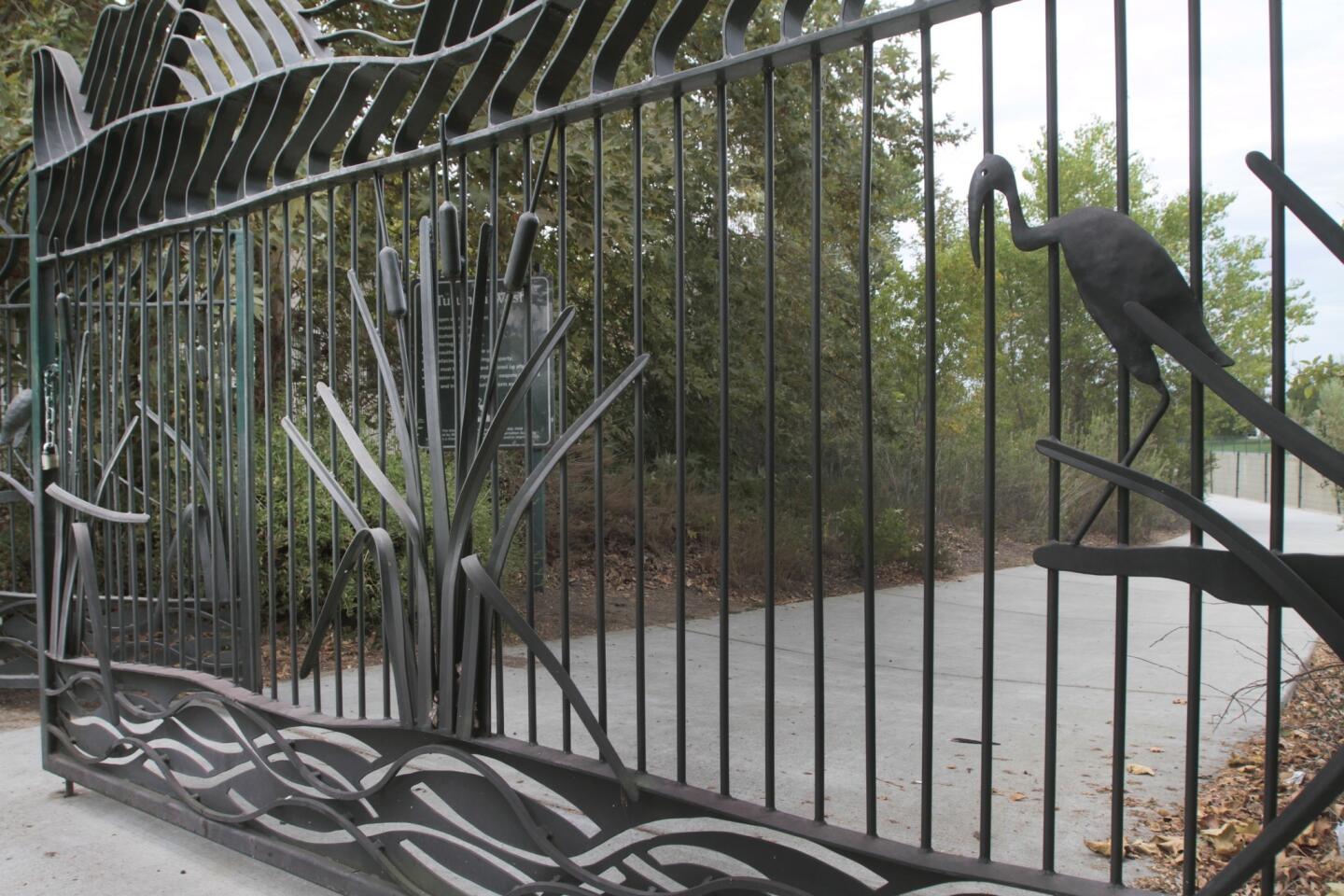
Start your walk in the Tujunga Wash Greenway in the Valley at this green gate, where the paved path will take you along the concrete wash. (Lawrence K. Ho / Los Angeles Times)
This walk in the Tujunga Wash Greenway in the Valley is a combination leg stretch, history lesson and art gallery, taking in one of the city’s least-known cultural constructions and one of the longest murals in the world.
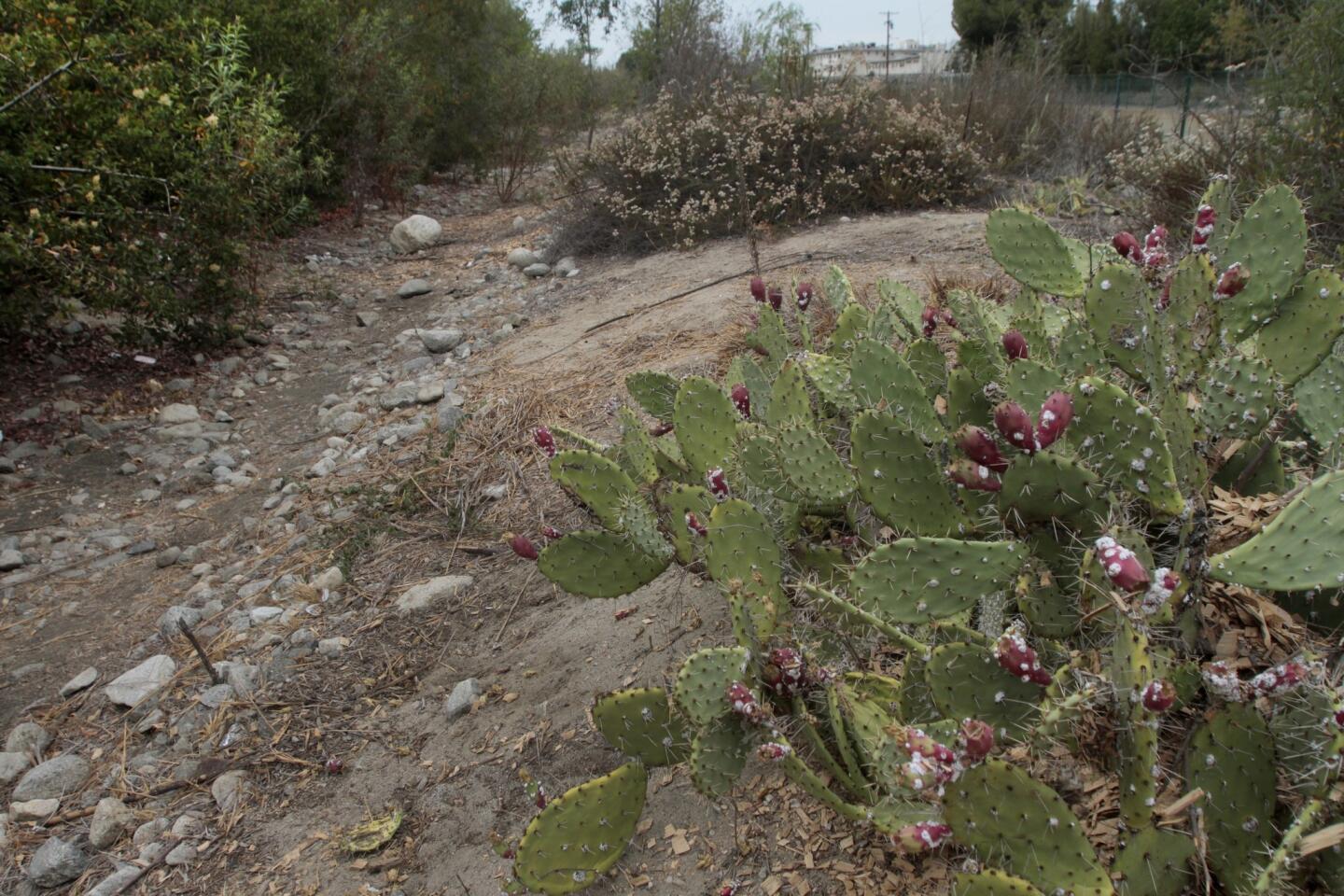
The dry streambed to the left of the channel is dotted with native -- and drought-tolerant -- plants, including cactus. (Lawrence K. Ho / Los Angeles Times)
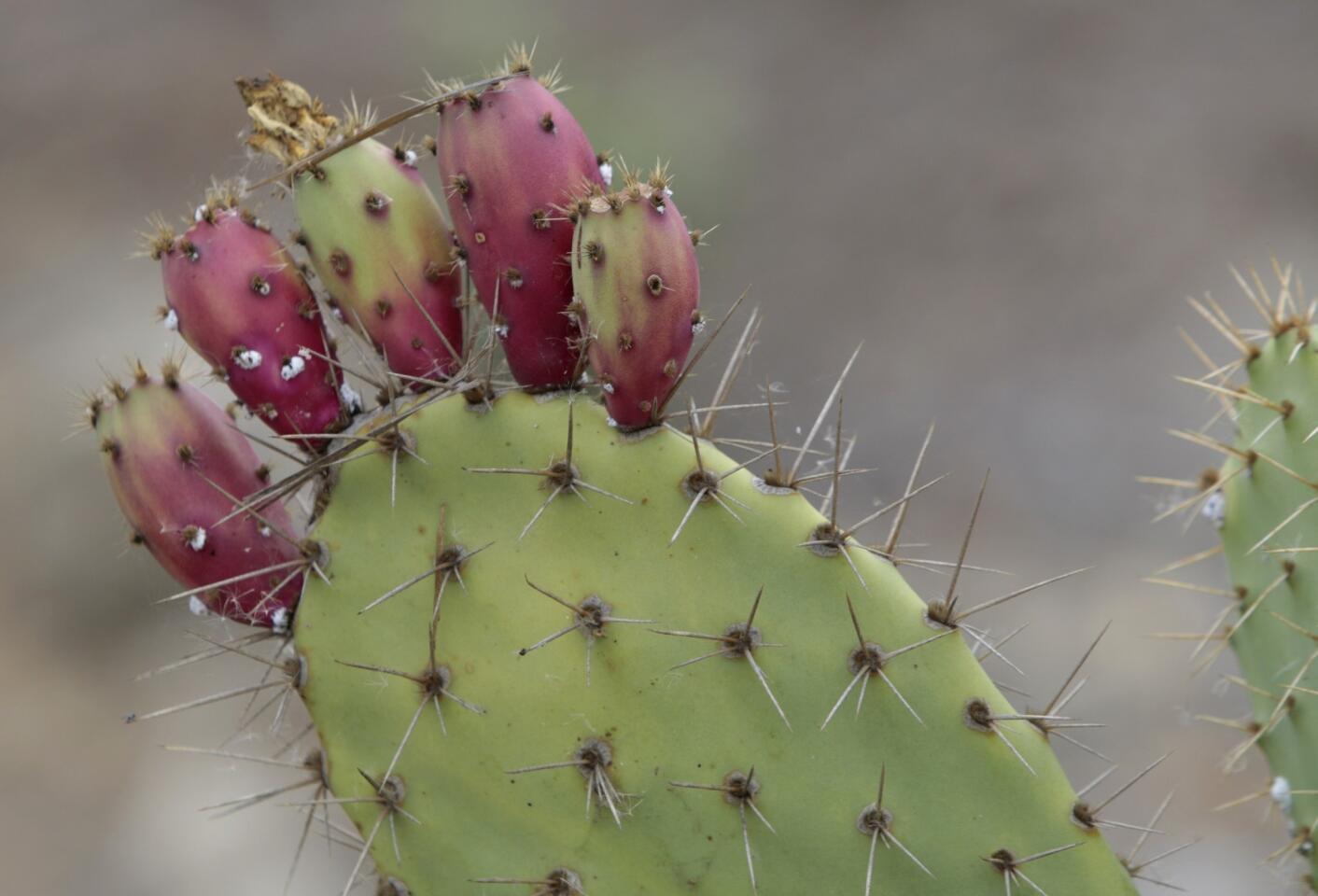
A profusion of plants, such as cactus, line the path. (Lawrence K. Ho / Los Angeles Times)
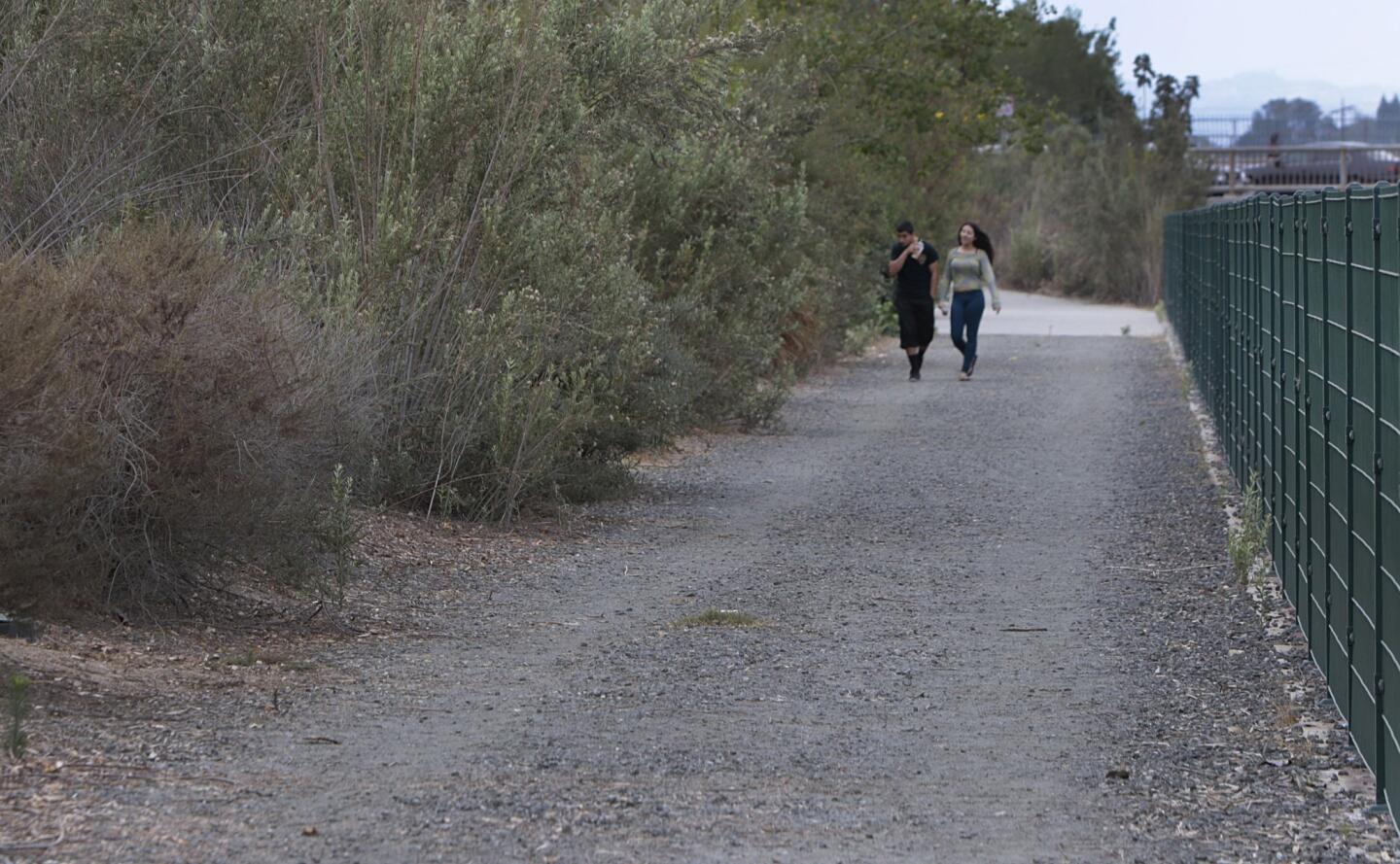
The concrete channel makes for a pleasant stretch of the legs. (Lawrence K. Ho / Los Angeles Times)
Advertisement
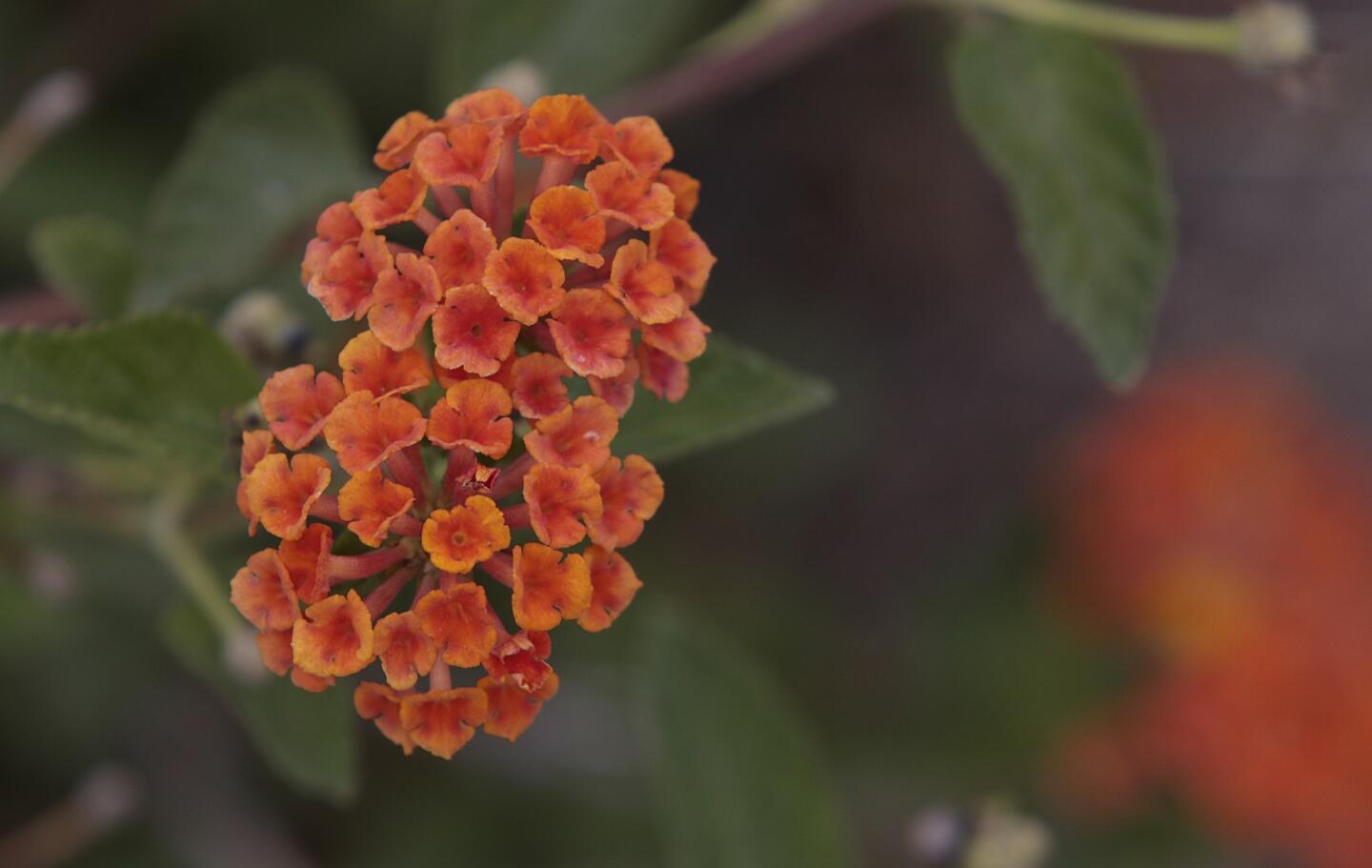
A lantana plant in bloom. (Lawrence K. Ho / Los Angeles Times)
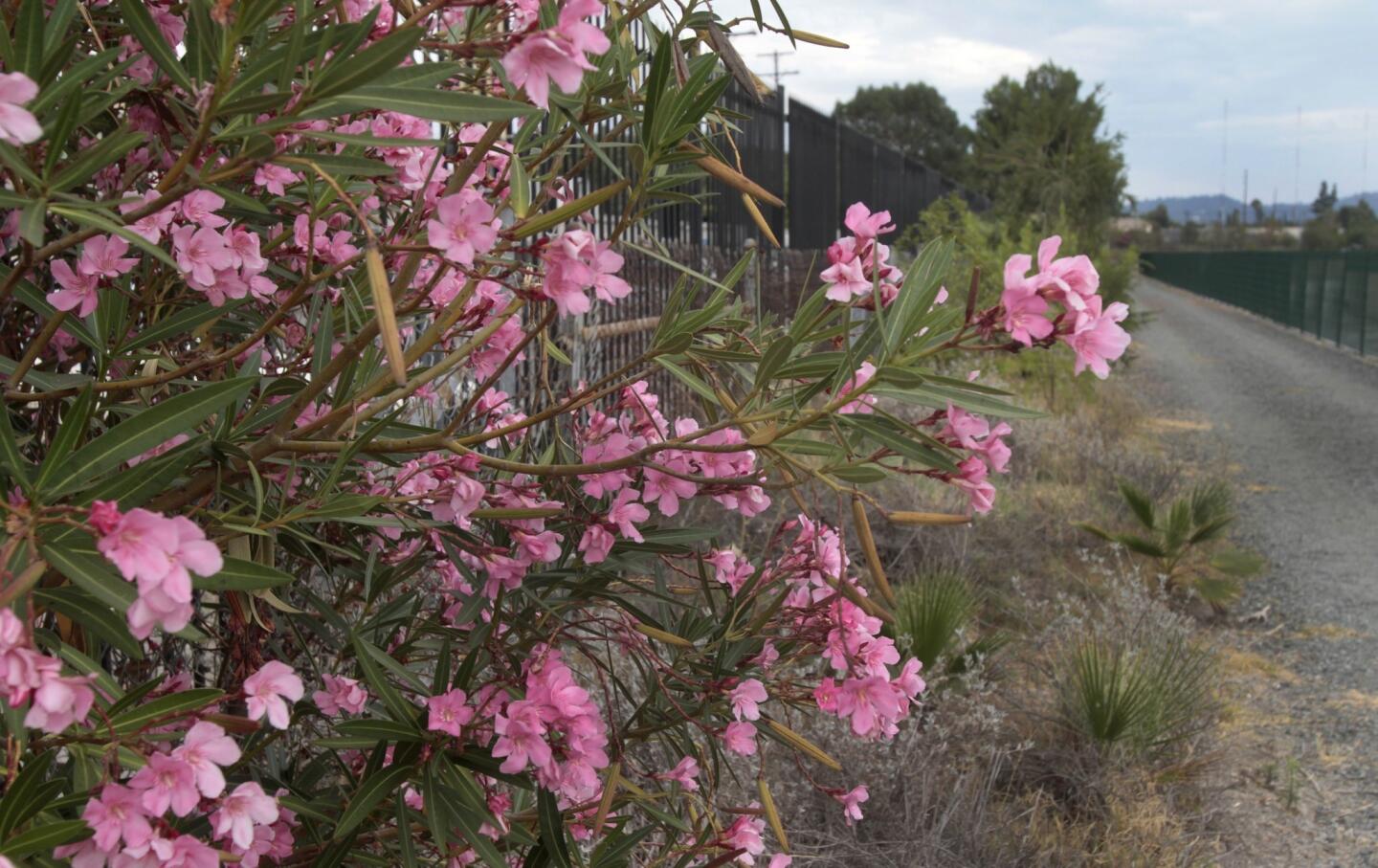
A pink oleander bush is in bloom along the concrete channel. The channel carries flood overflow from Hansen Dam, nine miles away. (Lawrence K. Ho / Los Angeles Times)
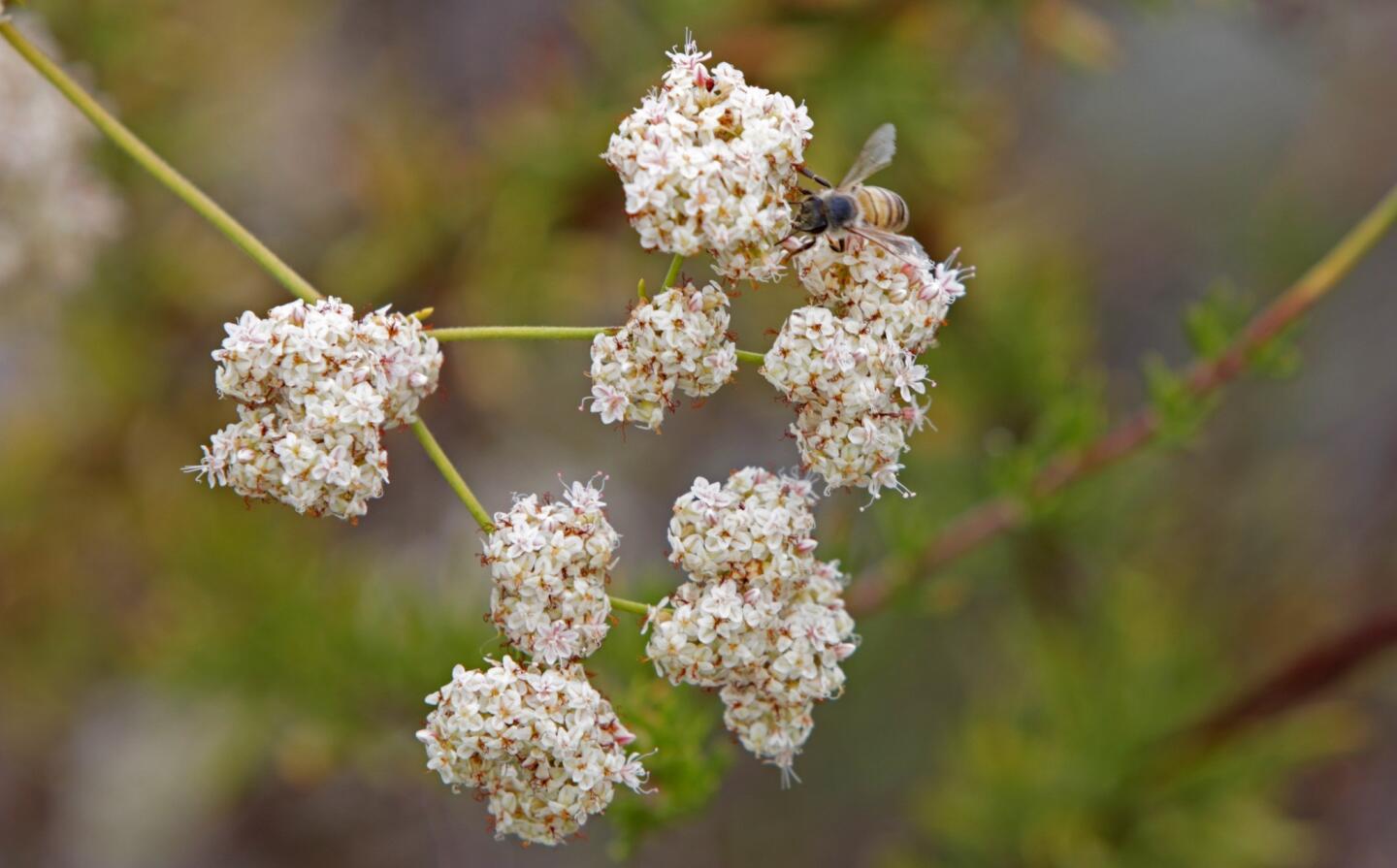
A bee lands on a cluster of flowers. (Lawrence K. Ho / Los Angeles Times)
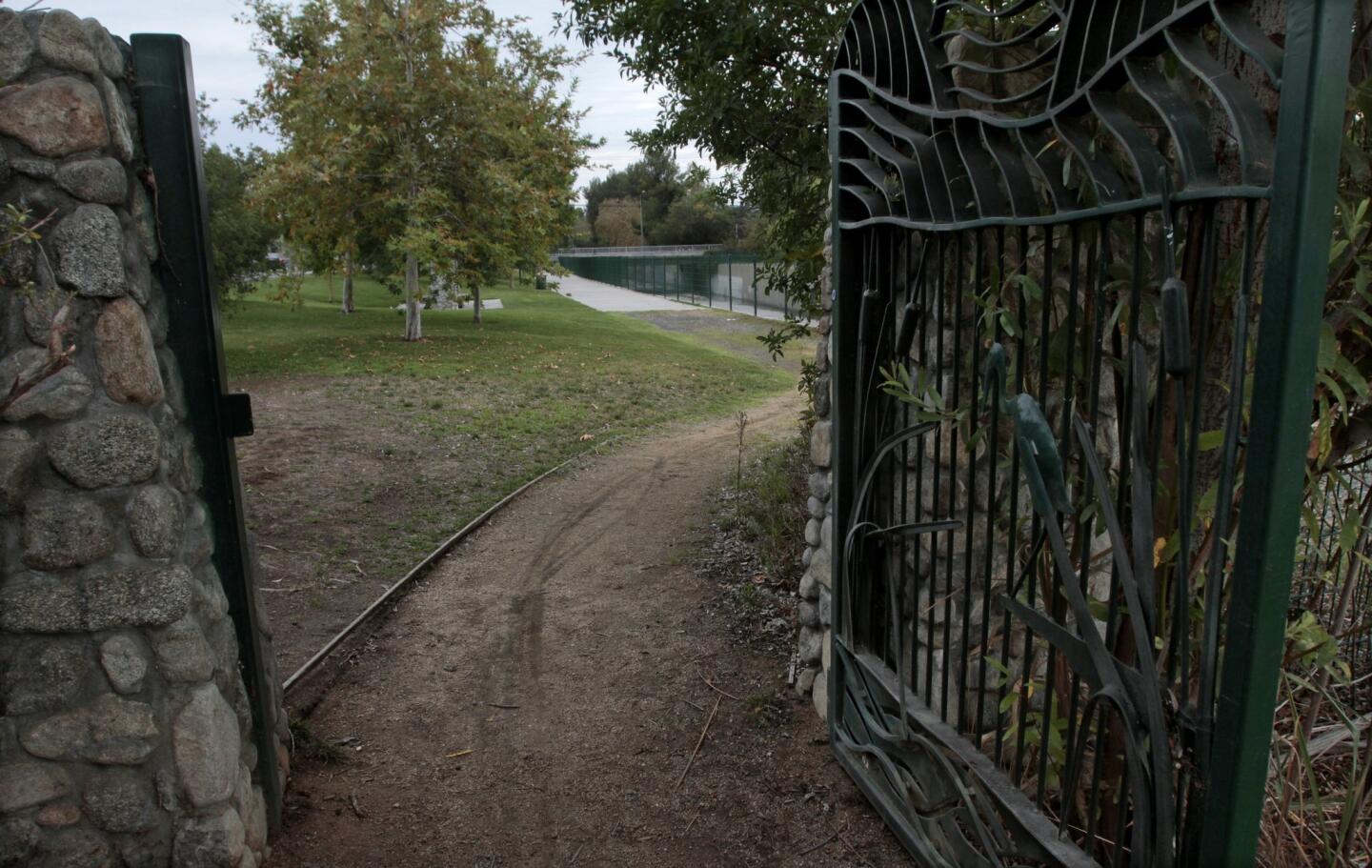
A stone and iron gate at Tujunga Wash opens up to a grassy area with sycamore trees. (Lawrence K. Ho / Los Angeles Times)
Advertisement
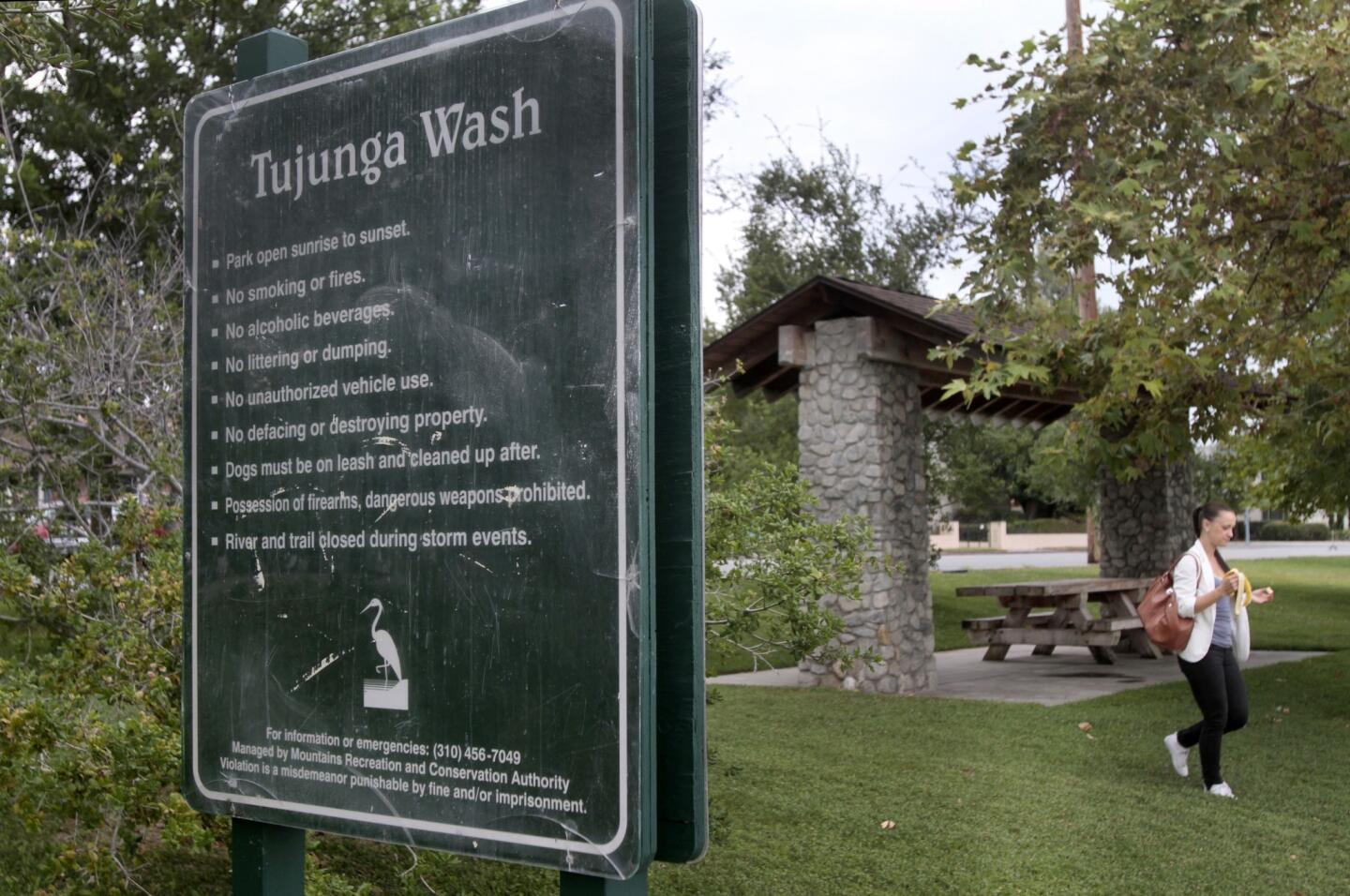
The grassy area at Tujunga Wash includes tables where visitors can have picnics. (Lawrence K. Ho / Los Angeles Times)
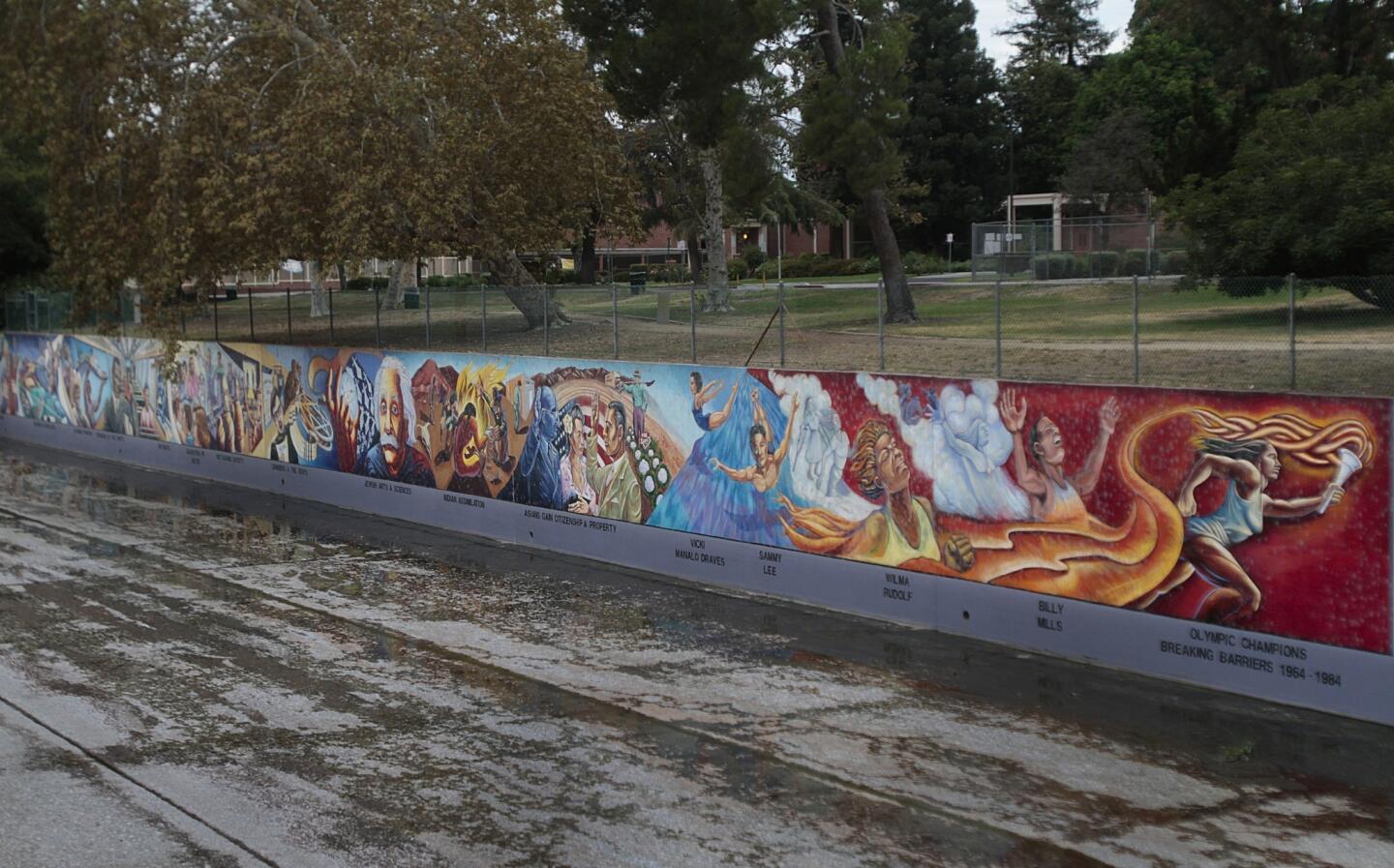
A portion of the walk features “The Great Wall of Los Angeles,” a public art project that is 0.6 miles long. (Lawrence K. Ho / Los Angeles Times)
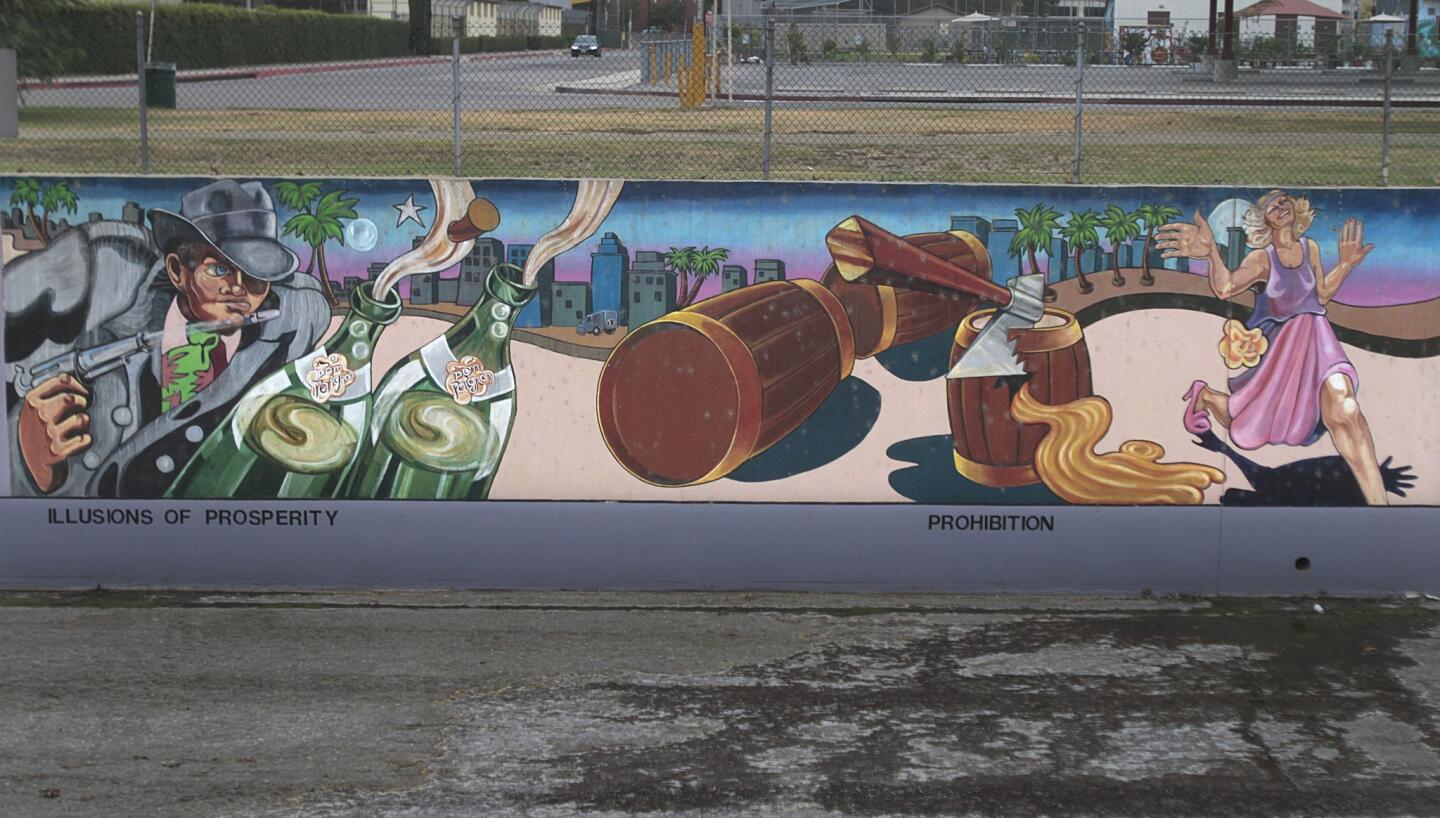
“The Great Wall of Los Angeles” is said to be one of the longest murals in the world. It originally began as a public art project in 1976. (Lawrence K. Ho / Los Angeles Times)
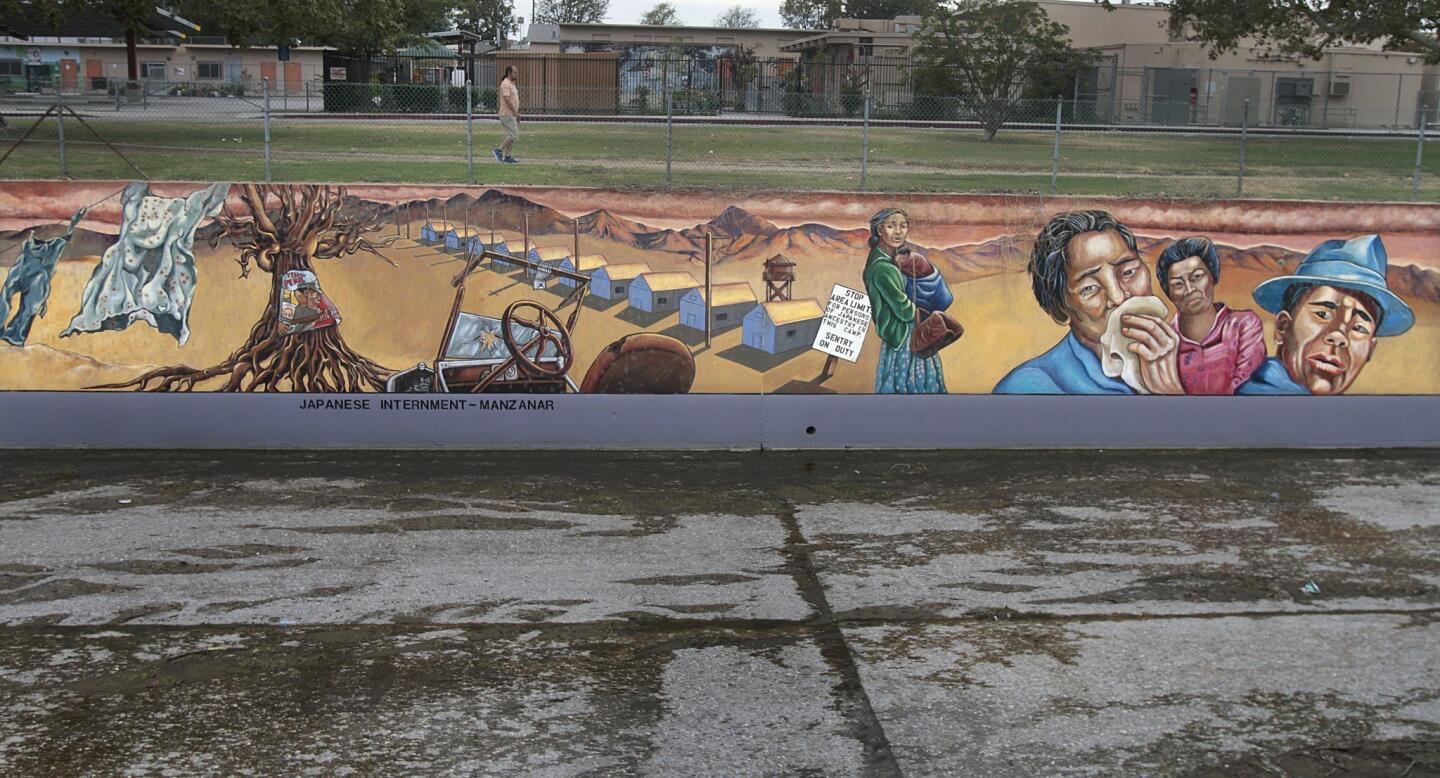
Events such as the Japanese internment camp at Manzanar, shown here, cover the varying history of Los Angeles as painted by local artists for “The Great Wall of Los Angeles.” (Lawrence K. Ho / Los Angeles Times)
Advertisement
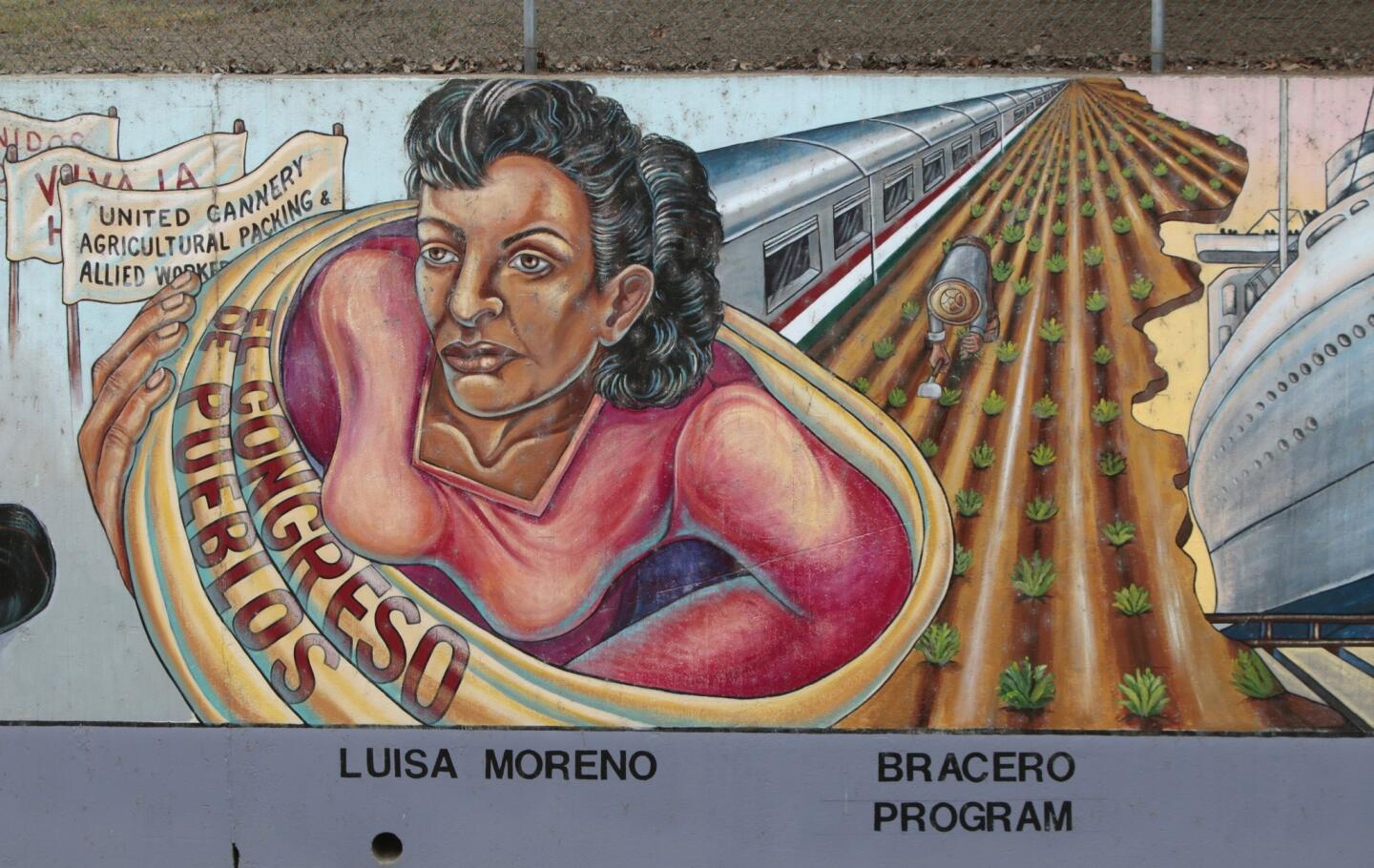
“The Great Wall of Los Angeles” had a substantial restoration in 2011. Here, a detail of the “bracero” migrant worker portion of the mural. (Lawrence K. Ho / Los Angeles Times)
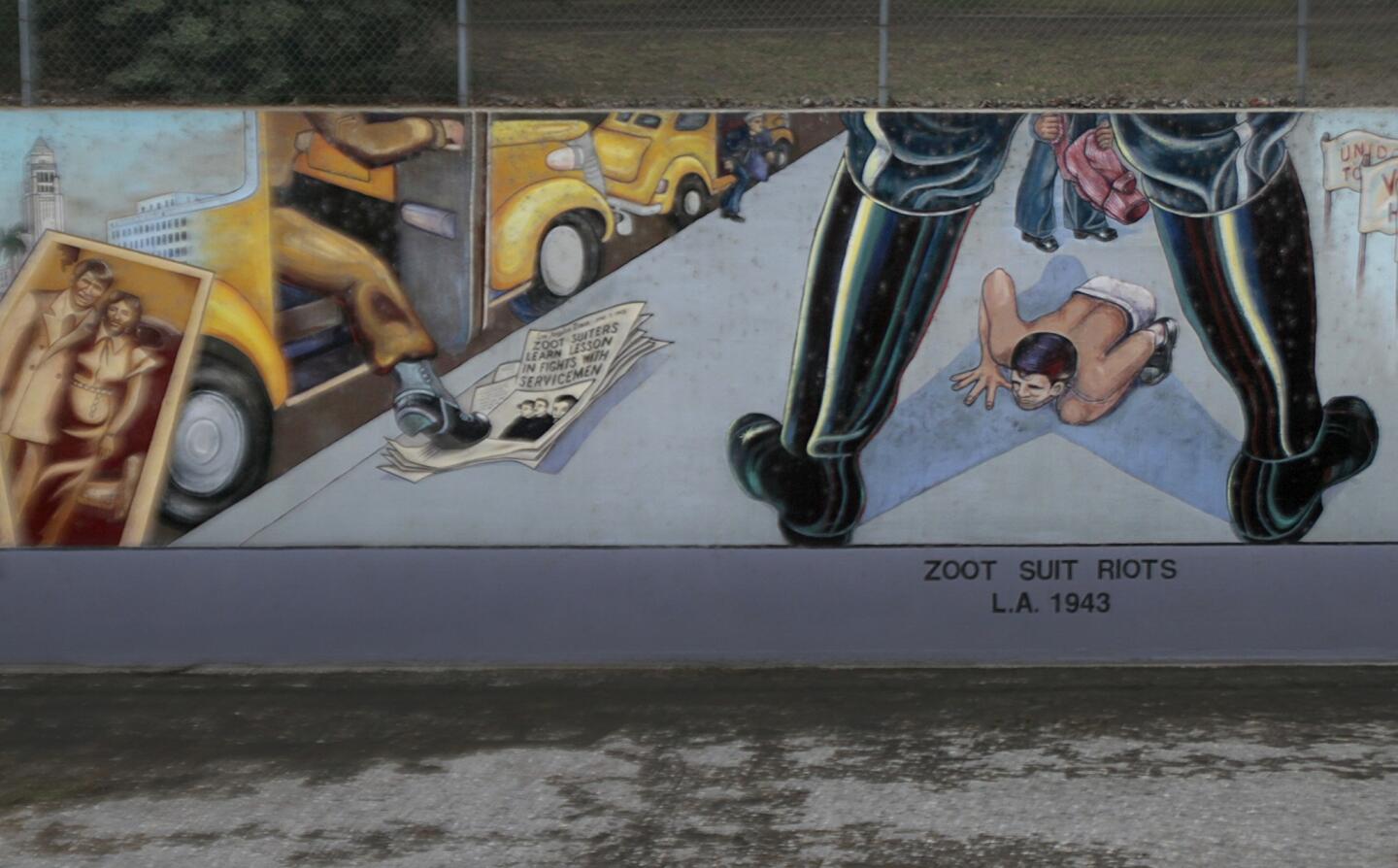
The Zoot Suit riots are depicted in “The Great Wall of Los Angeles.” (Lawrence K. Ho / Los Angeles Times)
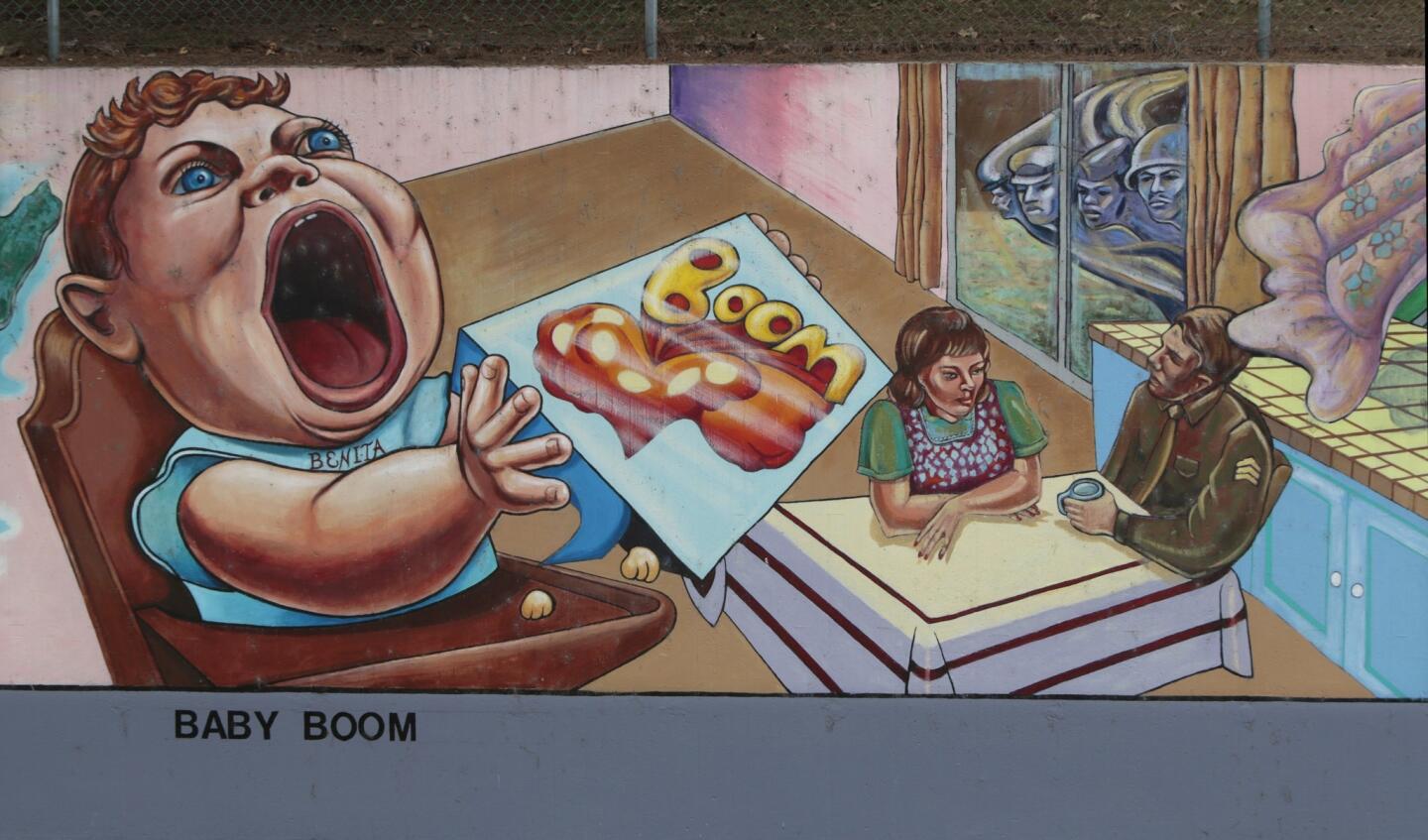
“The Great Wall of Los Angeles” fills the eastern-facing wall of the Tujunga Wash. (Lawrence K. Ho / Los Angeles Times)







